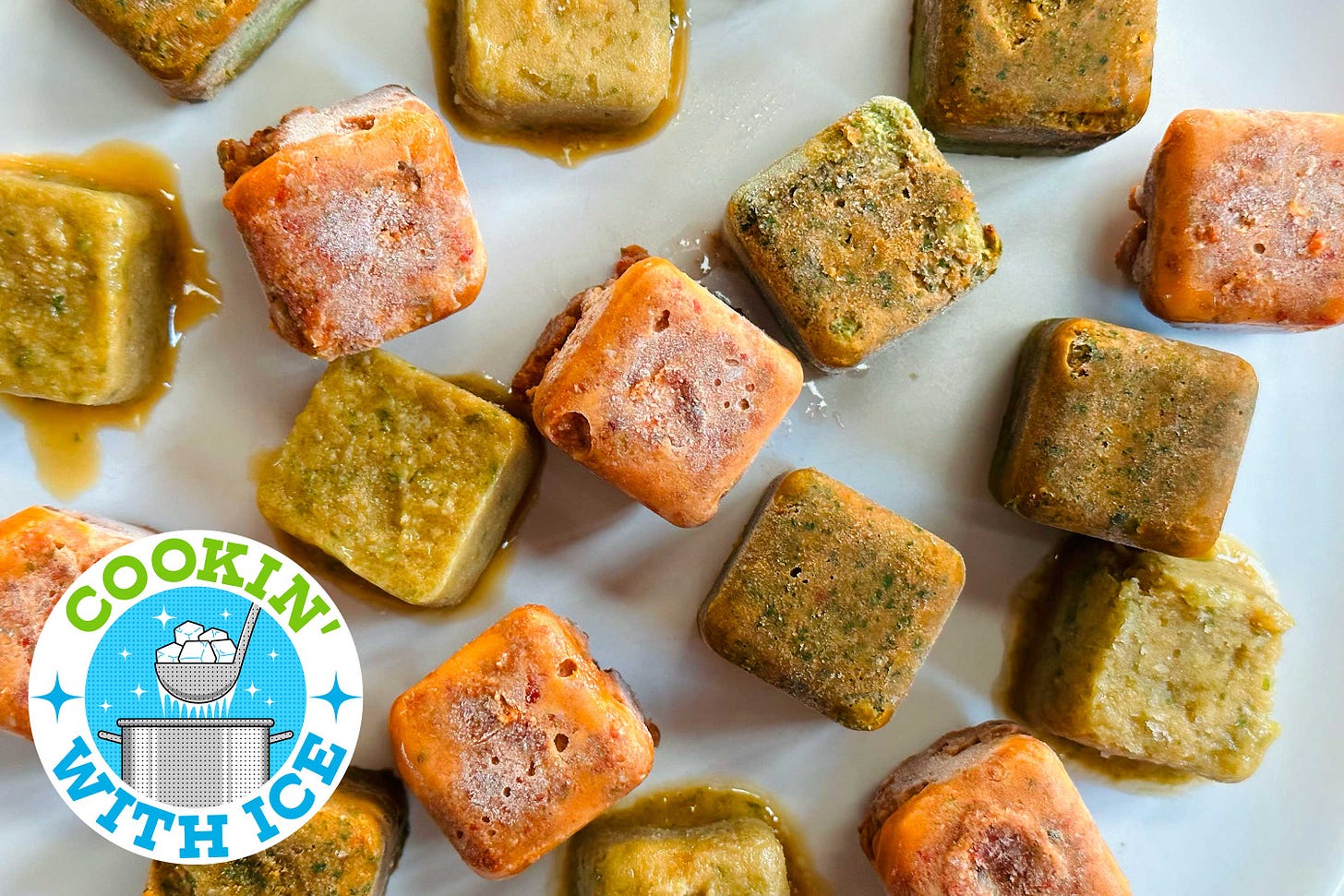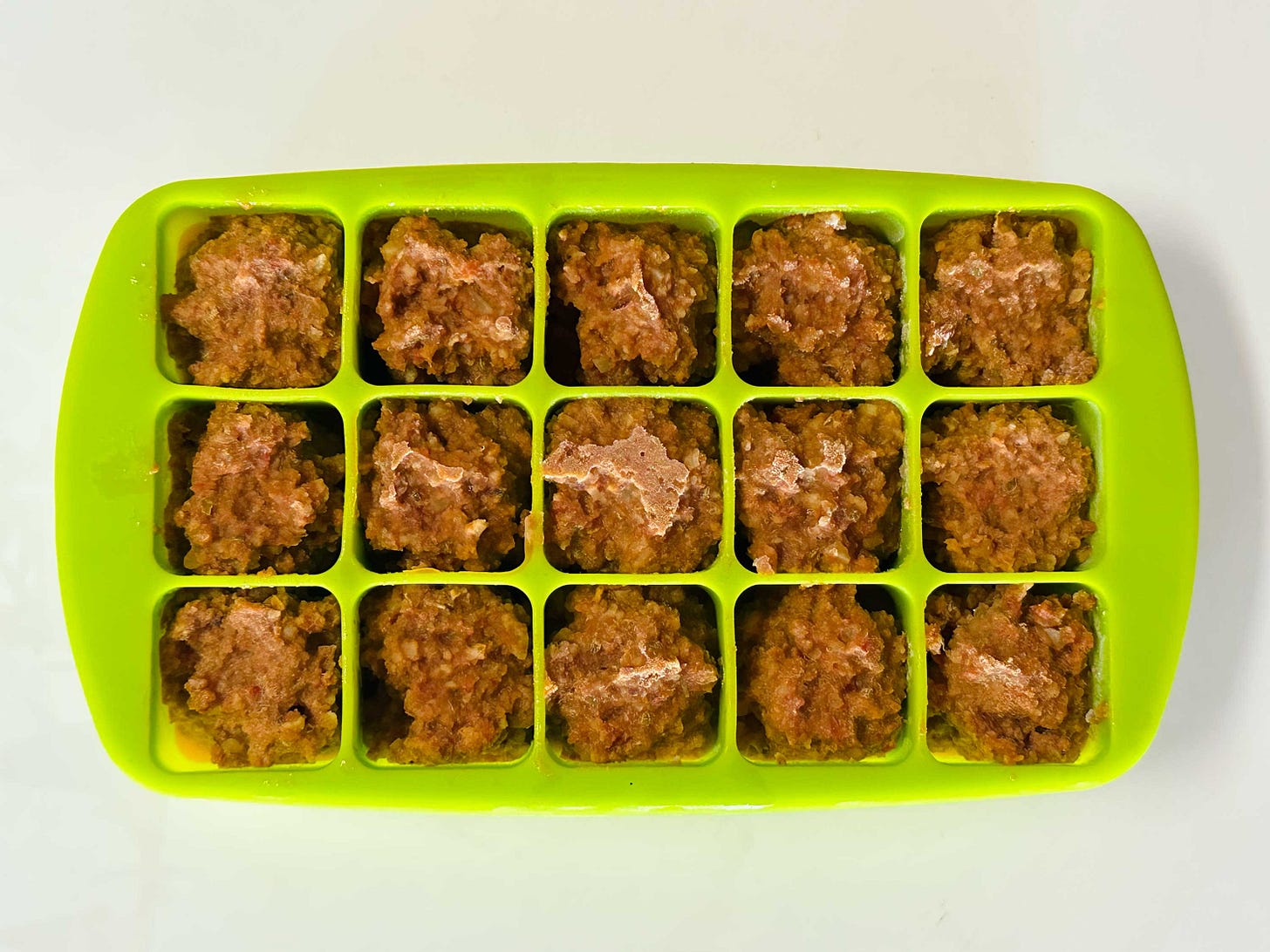Your ice cube tray is a zero-waste wonder
Even if you see one every day, this humble grid might be the kitchen’s most overlooked gadget
Your freezer might lead a double life as a texture and flavor hero, but you should also think of the kitchen’s coldest storage as your pantry’s icy twin. With the right combo of frozen proteins, plants, and flavorful mix-ins, you can get an easy, low-waste meal out of the ice and on the stove or in the oven in minutes—even if the fridge is bare. The key lies in a small, perhaps underrated, tool: the ice cube tray. Those little wells, and some well-placed ingredients, can help you build a frozen flavor library primed to add zing to your weekly dinner rotation.
It’s time to ‘freeze en place’

Chefs call the process of getting ingredients organized before you cook “mise en place.” We call putting the extras left after you cook on ice “freeze en place.” All too often, home cooks wind up with wee quantities of this-or-that in the back of the fridge at the end of a recipe. What to do with a cup of leftover tomato sauce or the chunk of onion your curry didn’t call for? How about that bunch of parsley you bought when you only needed a few sprigs? There’s no need to let it go to waste.
The tiny compartments of an ice cube tray are the perfect vehicle for storing surplus sauces, stocks, herbs, and aromatics in perfectly portioned and quick-thawing pieces. Once frozen, transfer the cubes to a zip-seal or reusable bag and store in the freezer for up to 6 months. Then toss those nuggets into a skillet or a pot of soup, stew, pasta, rice, or beans—and literally melt in flavor. You can store countless things this way, but here are our favorite kinds of food to cube:
Staple ingredients. Fresh aromatics, herbs, and acids will last for months on ice. Grated ginger, citrus juice, and sofrito will freeze solid on their own. Herbs, onions, garlic and shallots, you’ll need to finely chop and cover in oil.
Half-empty cans. Recipes don’t always call for an entire container of things like coconut milk, tomato paste, chipotles in adobo, or pumpkin purée. Left to linger in the fridge, they’ll start accumulating unwanted guests like mold.
Languishing liquids. Save excess pesto, pasta sauce, wine, and stock to swirl into future soups, sauces, or braises. Leftover coffee? Cube it up to chill your cold brew without watering it down.
Batch-cooked flavor bombs. Here’s a rule to live by: If a dish calls for a special sauce or time-consuming flavor builder, make extra and freeze it. This applies to caramelized onions, roasted garlic, curry paste, and from-scratch veggie bouillon.
3 easy sauces to put on ice
If want to use the freezer to help future-you make tasty meals in a hurry, frozen sauces and sauce starters are your new best friend. Instead of simple cubes of solo ingredients, these blocks of thaw-and-go deliciousness bring full-blown flavor profiles to anything from noodles to savory dips. Plus, they blitz together in minutes. Here are our three go-tos to keep in cold storage:
Red Pesto
This riff on an herby mainstay brings an umami-rich staple out of the pantry and into the freezer. Thawed, it’s an excellent smear on toast or as a sandwich spread. Even better: Melt it in a skillet and toss with pasta or use as a starter to spruce up scrambled eggs.
Yield: 1 ⅓ cups



